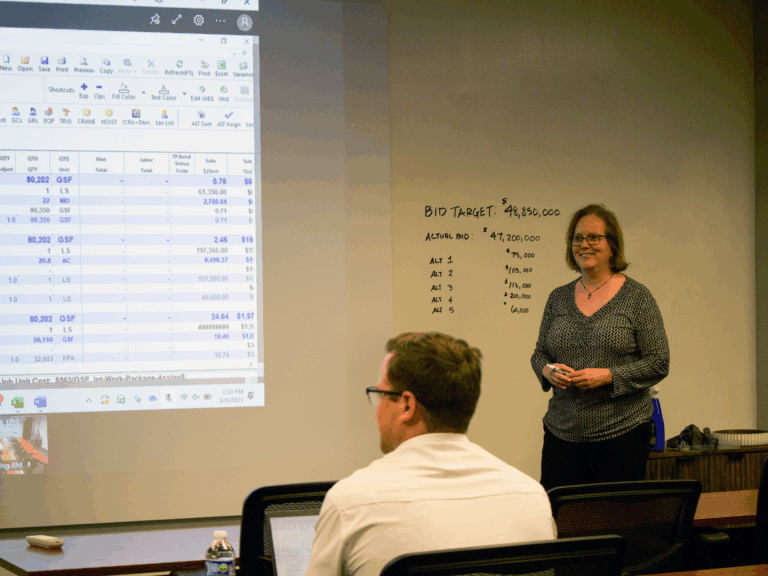
Our industry historically has taken pride in the ability to value engineer projects. In reality, value engineering is actually a wasteful process that can and should be avoided by excellent preconstruction practices. Value engineering by definition is an exercise in rework, reducing costs (and often times scope) to bring a project back within budget. Of course, there are always unforeseen conditions, weather issues, and unpredictable events that can drive a budget up, and we can find ways to bring the project back within budget, but there are many issues that can be resolved during the design phase through continuous estimating and collaborative design review. Once we establish clear expectations from our owner, or the conditions of satisfaction for the project, we can set a target budget for the project and guide the design to stay within it. Here’s a breakdown of how that works.
A Better Way
There are two ways we can review designs and provide estimating for a project. First, the design team can send us complete drawings that we go through painstakingly and price out every detail. Usually, we send back a final estimate and if it’s over budget — it’s back to the drawing board. That means redrawing, delays, and the beginning of value engineering exercises. The alternate option is for us to be in the room with the design team to price out every process, material, and design element as the architect draws it. By having daily or weekly design meetings we can understand what they’re drawing and what our owner is seeking in the design. If something is over budget or there’s an issue that could negatively impact the schedule, we can identify it in real time and work with the design team to find a better option. Essentially, we’re making a series of small corrections during the design phase, instead of wholesale rework during construction.
Measure Twice, Cut Once
If we are in the room and able to provide continuous design review, we have the ability to prevent unnecessary rework for the designers as well as in the field. If there’s an issue in the drawings that doesn’t present itself until we’re actively building, the only option is to tear it out, redraw, and start over. This kind of mistake means additional cost of materials and lost labor time. If we’re at the table with the design team as they’re drawing, we have a better chance of identifying potential clashes or issues in the field by reviewing the drawings closely for constructability.
We like to say we’re good at adding value, not value engineering. The difference is adding value is something we can do proactively, during preconstruction. Value engineering is reactive and wasteful. A design team and contractor working together during the design phase can add value and keep the project on schedule and within budget through continuous, real time design review and estimating.

